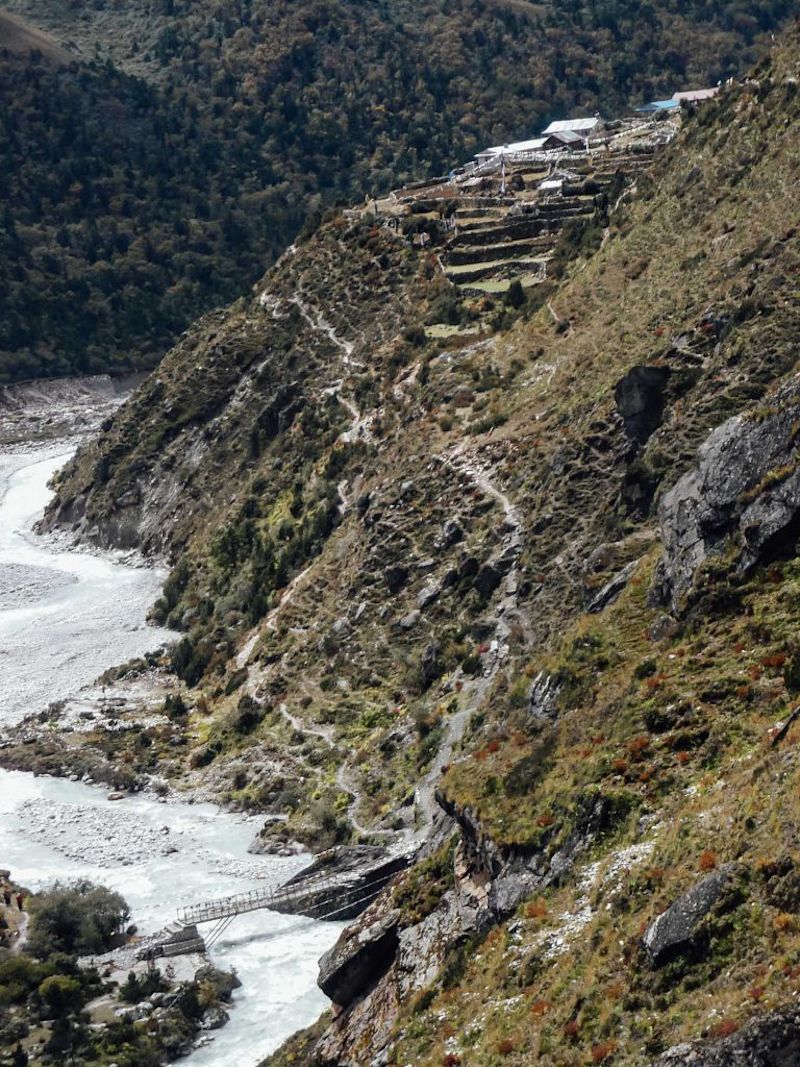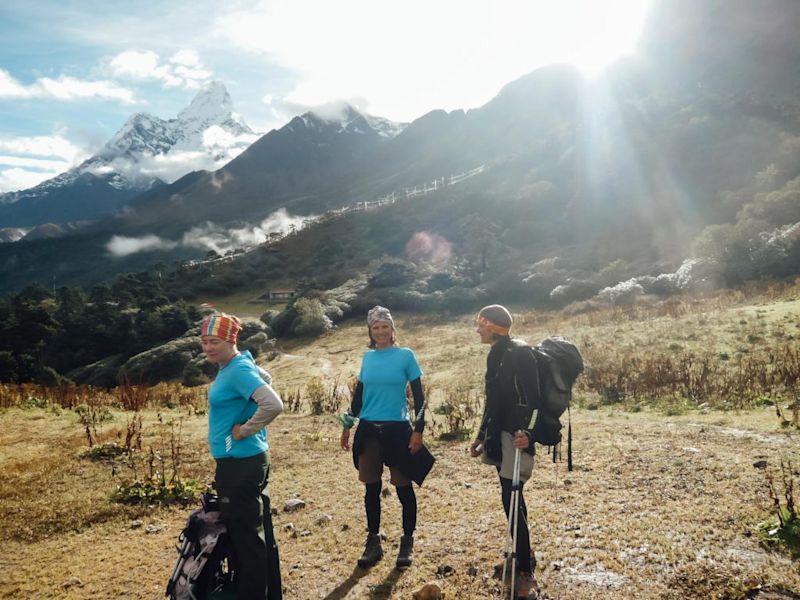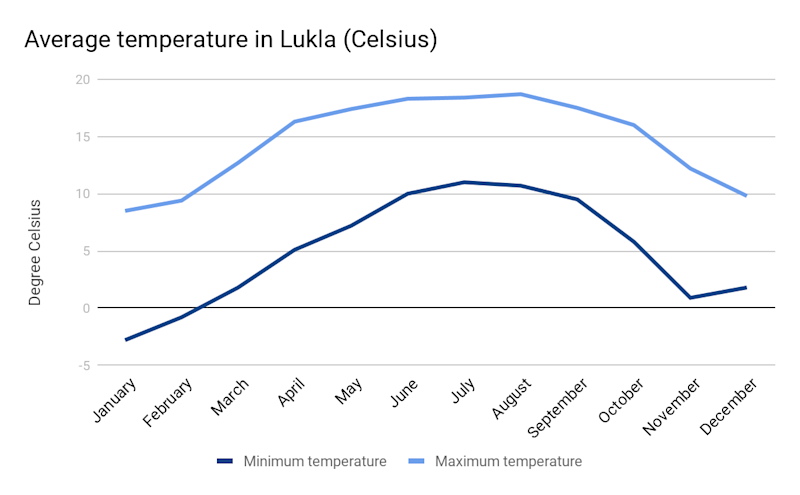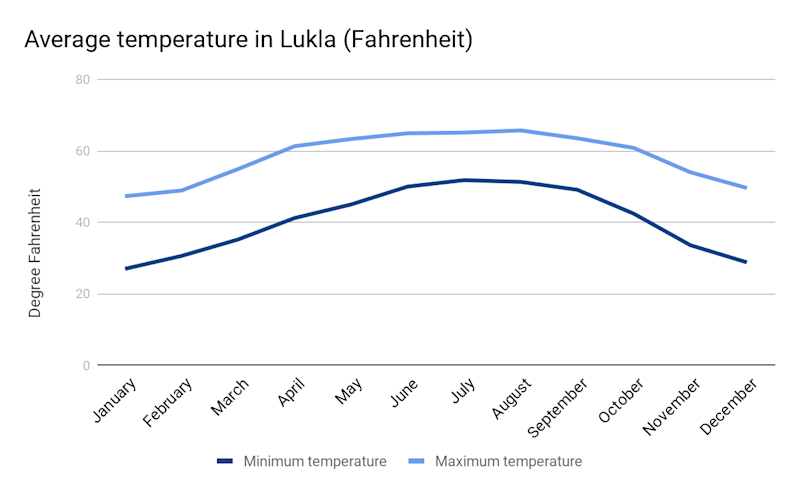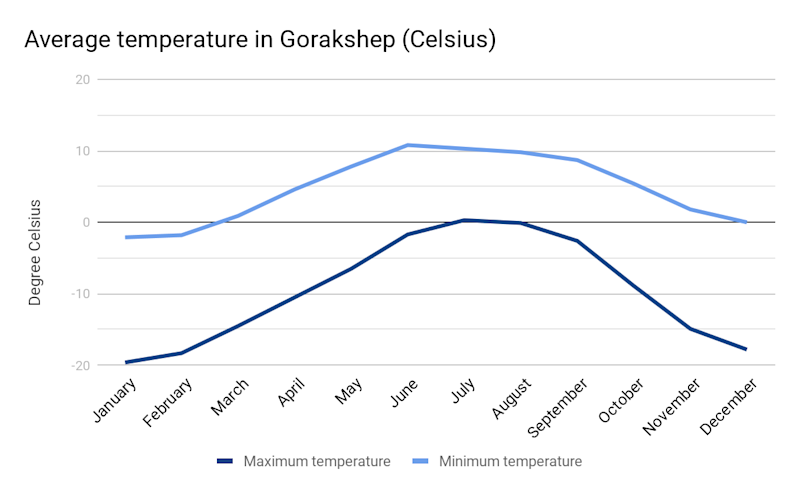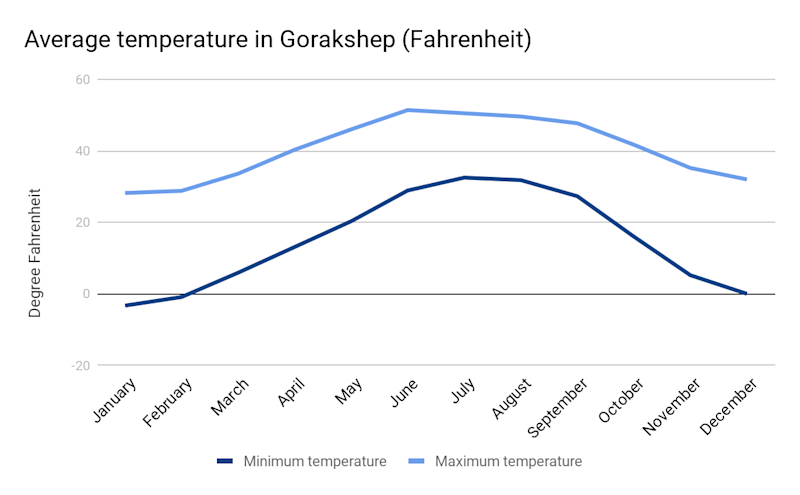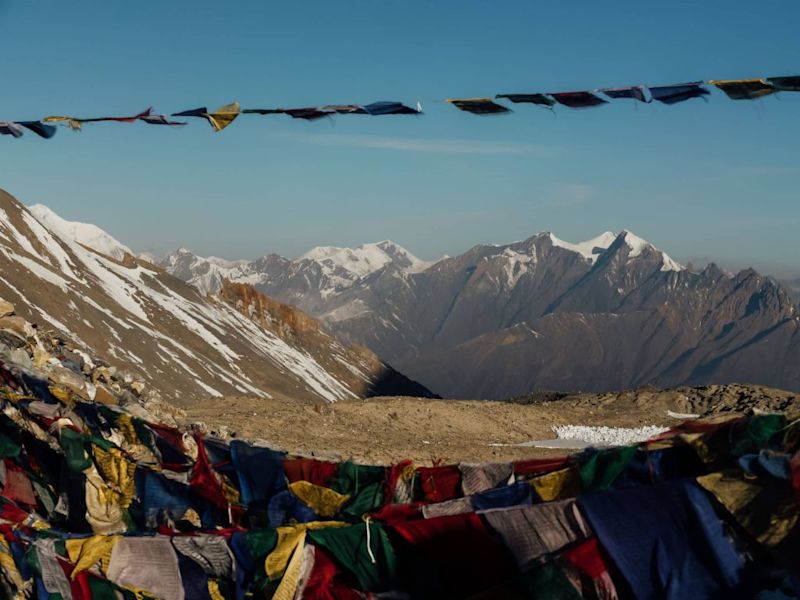The two climates of the EBC trek
You start the Everest Base Camp (EBC) trek in Lukla at 2,860 m (9,383 ft) above sea level in a temperate highland subtropical forest climate zone. You end it almost three vertical kilometres higher at Everest Base Camp at 5,364 m (17,598 ft) in an alpine tundra climate zone.
So you need to consider the weather conditions of two climate zones when considering the Best time to trek Everest Base Camp as well as what to pack for the trek.
With this in mind, we discuss rainfall, temperatures, winds and snowfall in terms of the temperate and tundra climate zones of the EBC trek.
Summer monsoon rains
Rain is more of a risk along the lower half of the Everest Base Camp trek route
When monsoons accost India in summer, those moisture-laden systems also travel north across land and reach Nepal from the south. In east Nepal, where you find the EBC trek route, monsoon downpours and thunderstorms usually start arriving anytime between late May and late June, and then stick around till mid or late September.
While the higher regions of the Everest Base Camp trek receive relatively little rainfall in summer, the tremendous rainfall in the lower portion of the trek route makes the EBC trail essentially a no-go zone in summer. Not only does monsoon season mean drenching rains, but it also results in dangerously muddy and slippery mountainside paths. Further, the chances of landslides are too high. If that weren’t enough, summer humidity in the temperate zone of the trek can be unpleasant.
Fortunately the rainfall across the Everest Base Camp trek route is minimal outside of the summer monsoon season. But of course that doesn’t mean the rest of the year is our playground. We have to consider that other important weather factor: temperature.
Coldest temperatures
We all know that the cold in the Himalayas is a serious matter. You don’t have to climb Mount Everest to get frostbite – you can get it along the Everest Base Camp trek too if the temperature plummets and you’re not properly equipped. Or you could just end up with good ol’ fashioned pneumonia. While the temperatures aren’t too brutal in the temperate zone at the beginning of the trek, they definitely start to bully you further along the trail.
It's not all snow and ice on the trek – some days are sunshiny and positively balmy!
Temperatures in Lukla
We begin our Everest Base Camp trek adventure in the mountainside town of Lukla. At 2,680 m above sea level Lukla is in Nepal’s temperate climate zone. The temperatures are pleasant, as the Celsius and Fahrenheit graphs below show, with night-time temperatures only just dropping below freezing point in winter.
Temperatures in Gorakshep
The temperatures in Gorakshep are a world away from those of Lukla. Gorakshep (5,164 m) is the highest village on the Everest Base Camp trek. We spend a night here before turning back towards Lukla. The Celsius and Fahrenheit graphs below show the average monthly temperatures for Gorakshep.
Even though you stay in teahouses and lodges (versus tents) during the Everest Base Camp trek, night-time temperatures in particular must be considered very carefully. Most of the accommodation is fairly rustic and the bedrooms unheated. Many bedrooms, in fact, only have a single pane of glass for windows. Trekkers often wake to water bottles that are frozen solid. And this can happen during autumn and spring, not just winter.
Wind strength and chill factor
Not everyone researches wind strength and wind chill factor when planning a trek. Rookie mistake.
That said, in many parts of the world, the winds are strongest and coldest in winter. So low temperatures are often indicative of bad winds. And this is this case in the Himalayas, because the northern jet stream migrates southward in winter, and brings with it high winds.
Along the temperate part of the Everest Base Camp route, winds pick up in late September. And they are at their fiercest in March. March wind speeds and wind gusts along the first half of the Everest Base Camp trek route can reach above 20 kmph, as they did in 2019, a particularly windy year.
In the colder, higher region of the trek route, the winds are at their strongest between late November and March. These winds come with air streams from Mongolia and Siberia and so are pretty dang cold to put it mildly. Wind gusts regularly reach 30 kmph.
So while the cold is a perfectly strong reason in and of itself to not tackle the EBC trek in winter, the winds during this time of the year should also give you pause. There are many highly exposed sections of trail on the EBC trek, and strong winds can pose a real threat to trekker safety.
Battered prayer flags attest to the ferocious winds of EBC
Dangerous winter snowfall
In the very high Himalayas the winter actually sees little snowfall. But along the lower Everest Base Camp trek route winter equals fresh dumps of snow, usually starting in November. While you can still trek the Everest Base Camp route when there’s snow, blizzards and high snowfall can sometimes lead to higher passes being closed, which can delay you indefinitely.
Further, some of the very high passes that you cross on certain EBC variation treks like the EBC and Gokyo Lakes trek and EBC and Three Passes trek are permanently closed in winter. So doing the Everest Base Camp trek in winter limits your route options.
All that said, this is the Himalayas, and it can snow when it wants to. So you have to keep an eye on the weather forecast. And you also have to accept that snow could be part of your Everest Base Camp trek no matter the month you choose.
If you haven't already, please read Best time to trek Everest Base Camp for further relevant information like when the trek route is the most crowded and when to trek if you'd like to see Everest Base Camp in action!


